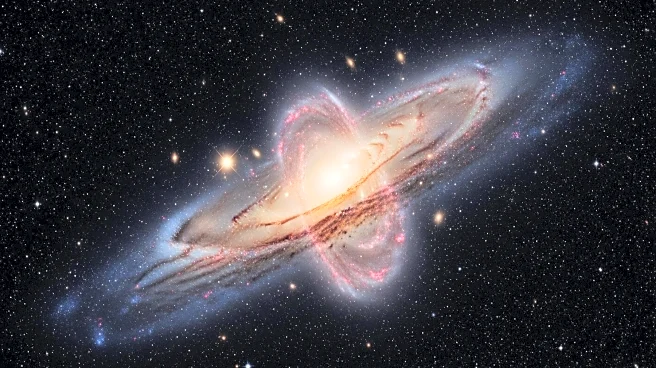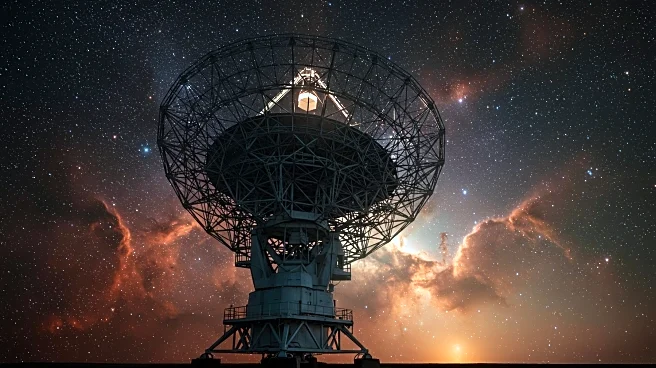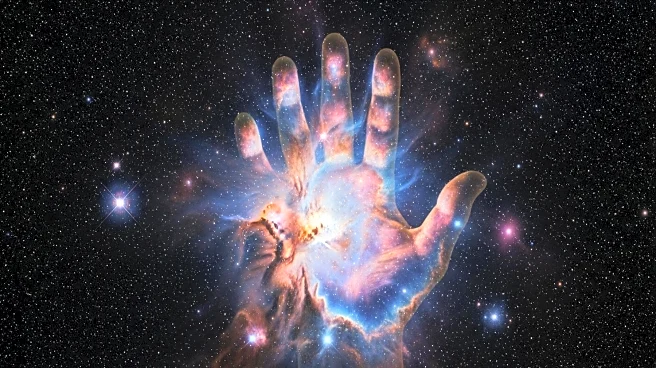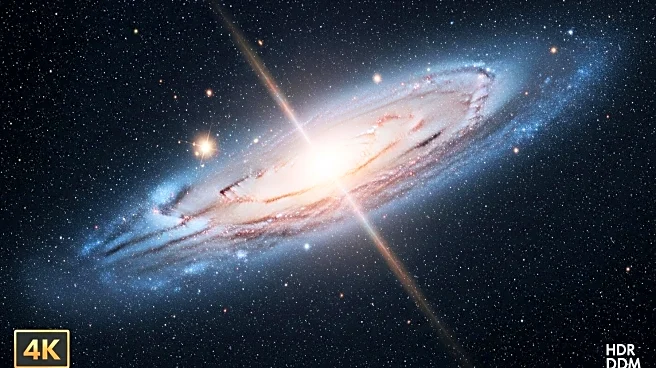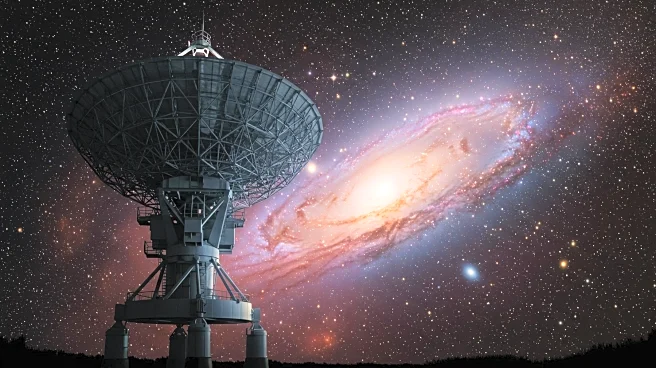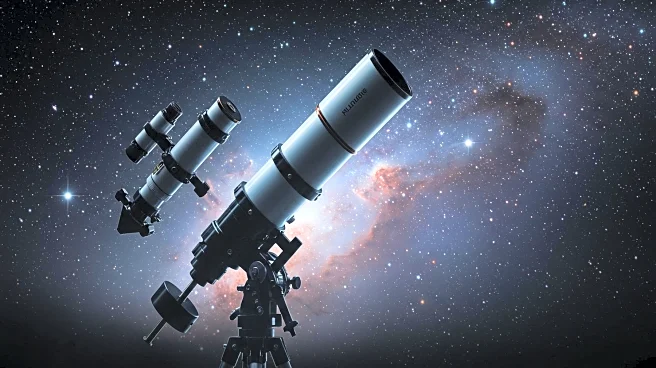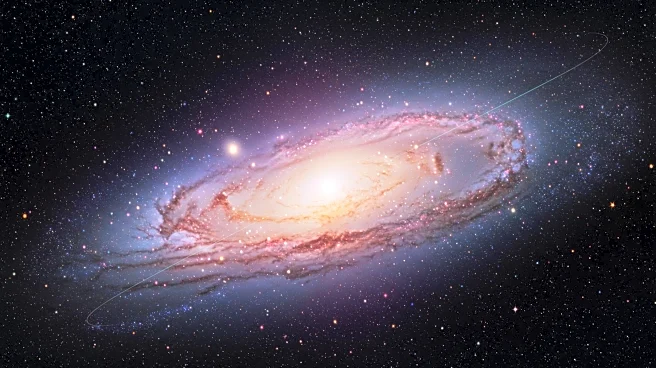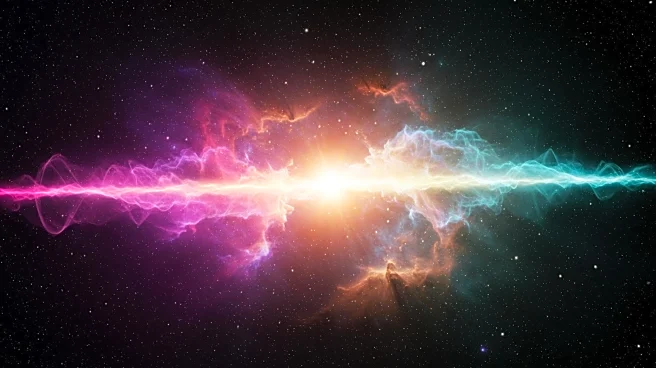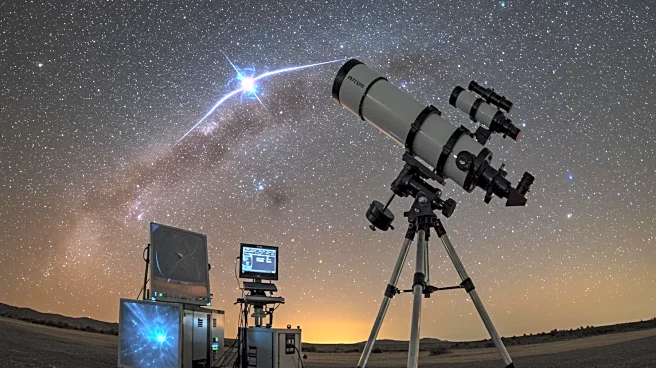What's Happening?
The 'Hand of God' nebula, a pulsar wind nebula, has been revealed through the interactions of magnetic fields and high-energy particles emitted by a dead star. The pulsar's intense magnetic fields accelerate particles, forming powerful winds that shape the surrounding nebula into complex structures. Observations using X-rays and radio waves help scientists understand the physical conditions around the pulsar and develop models of particle interaction with magnetic fields.
Why It's Important?
Understanding the role of magnetic fields in shaping nebulae provides insights into the behavior of pulsar wind nebulae and the cosmic mechanisms governing nebula formation. This research advances astrophysics by revealing the complex interactions between particles and magnetic fields, contributing to the broader understanding of cosmic phenomena. Multiwavelength studies are crucial for developing comprehensive models of nebulae and their evolution.
Beyond the Headlines
The study of pulsar wind nebulae like the 'Hand of God' highlights the importance of multiwavelength observations in astrophysics. By combining data from different telescopic sources, researchers can gain a deeper understanding of the cosmic processes shaping nebulae. This approach underscores the need for collaborative efforts in astronomical research to uncover the mysteries of the universe.


